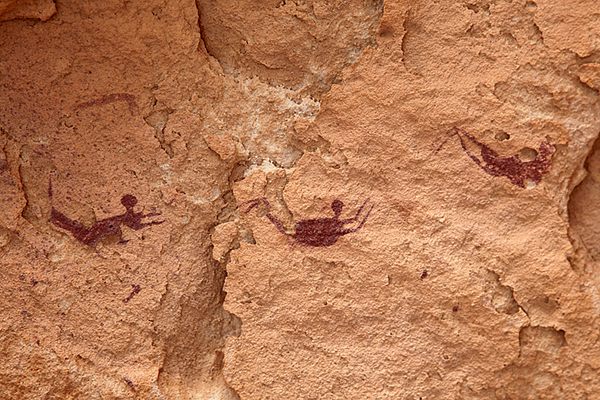About
The 1996 film The English Patient, based on Michael Ondaatje’s book, bears a rather loose resemblance to the life and times of the real-life László Almásy. Between the World Wars, this intrepid Hungarian desert explorer and, later, Axis collaborator, did indeed find a cave in southwest Egypt’s hyper-remote Gilf Kebir plateau. This is a corner of the Sahara that's so arid and little-visited that the plateau itself had only been discovered a few years earlier.
The cave, in a natural amphitheater called Wadi Surah, improbably depicts what could be interpreted as playful swimming figures from a time when the Sahara was much less arid. Almásy’s later book recalling his desert adventures was called Swimmers in the Desert.
The real cave is nothing like the dramatic cavern in the movie. It’s a rather ordinary, shallow scoop at the base of an outcrop. It does feature rock art that is thought to be 8,000 years old, but the tiny swimming figures that have survived the millennia are much degraded.
There are far more impressive and equally enigmatic galleries of prehistoric rock art nearby in the Gilf, as well the valleys radiating from the Jebel Uwienat massif, a hundred miles to the south, where the borders of Sudan and Libya meet.
Related Tags
Know Before You Go
It was never easy to reach Gilf Kebir, and other parts of the Libyan Desert in Egypt have been off-limits to tourists for some time. That is unlikely to change soon.
Treasures of Egypt: Hidden Tombs, Ancient Pyramids & Old Cairo
Explore pyramids, tombs, and local cuisine with your Egyptologist guide.
Book NowPublished
June 10, 2020
























